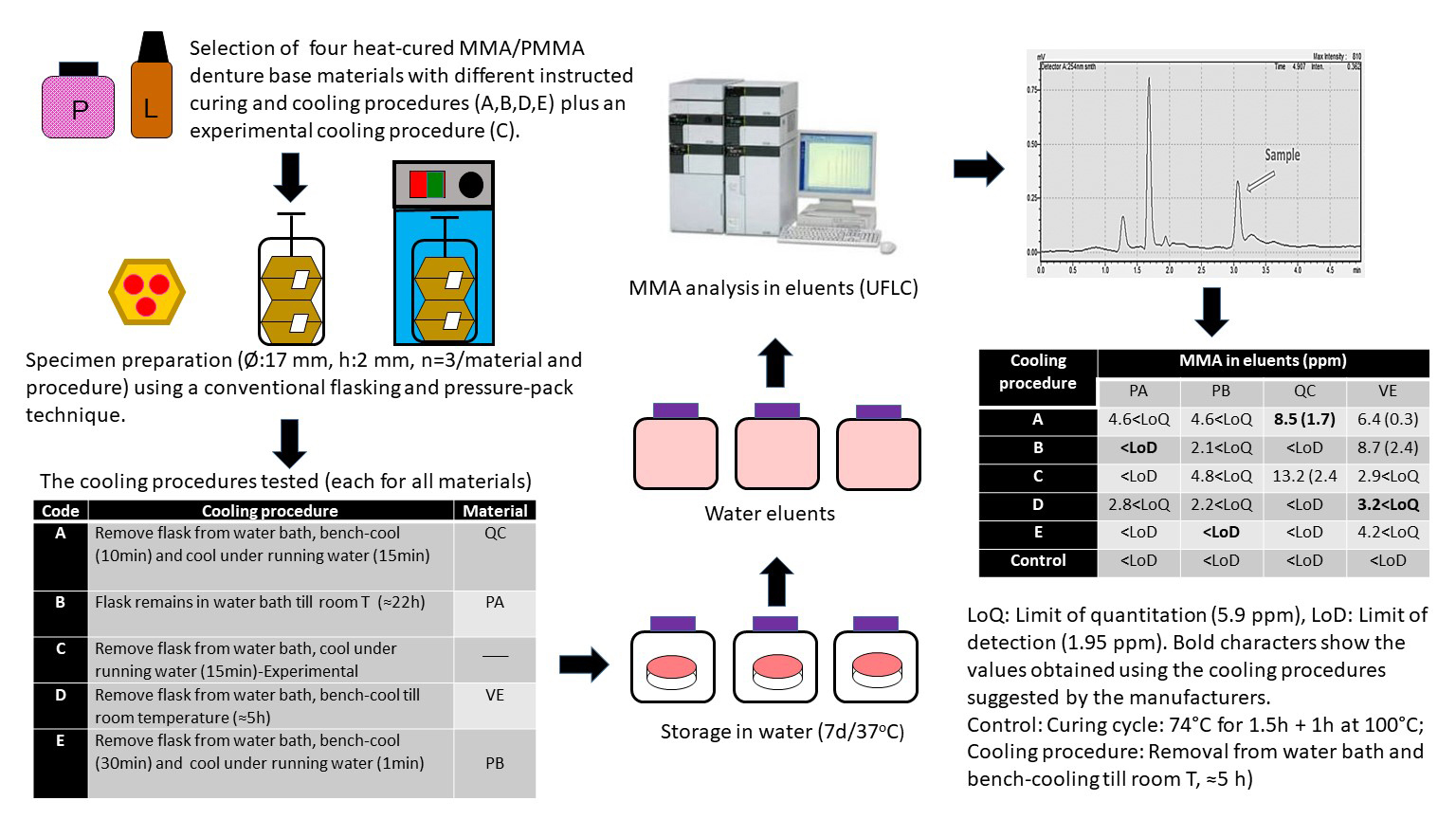The effect of cooling procedures on monomer elution from heat-cured polymethyl methacrylate denture base materials
DOI:
https://doi.org/10.1590/1678-7757-2022-0161Keywords:
Heat-cured denture base acrylics, Cooling procedures, Methyl methacrylate monomer elution, Ultra-fast liquid chromatographyAbstract
Objective: To evaluate the amount of methyl methacrylate (MMA) released in water from heat-cured polymethyl methacrylate (PMMA) denture base materials subjected to different cooling procedures. Methodology: Disk-shaped specimens (Ø:17 mm, h:2 mm) were fabricated from Paladon 65 (PA), ProBase Hot (PB), Stellon QC-20 (QC) and Vertex Rapid Simplified (VE) denture materials using five different cooling procedures (n=3/procedure): A) Bench-cooling for 10 min and then under running water for 15 min; B) Cooling in water-bath until room temperature; C) Cooling under running water for 15 min; D) Bench-cooling, and E) Bench-cooling for 30 min and under running water for 15 min. A, B, D, E procedures were proposed by the manufacturers, while the C was selected as the fastest one. Control specimens (n=3/material) were fabricated using a long polymerization cycle and bench-cooling. After deflasking, the specimens were ground, polished and stored in individual containers with 10 ml of distilled water for seven days (37oC). The amount of water-eluted MMA was measured per container using isocratic ultra-fast liquid chromatography (UFLC). Data were analyzed using Student’s and Welch’s t-test (α=0.05). Results:
MMA values below the lower quantification limit (LoQ=5.9 ppm) were registered in B, C, E (PA); E (PB) and B, D, E (QC) procedures, whereas values below the detection limit (LoD=1.96 ppm) were registered in A, D (PA); A, B, C, D (PB); C, D, E (VE) and in all specimens of the control group. A, B (VE) and A, C (QC) procedures yielded values ranging from 6.4 to 13.2 ppm with insignificant differences in material and procedure factors (p>0.05). Conclusions: The cooling procedures may affect the monomer elution from denture base materials. The Ε procedure may be considered a universal cooling procedure compared to the ones proposed by the manufacturers, with the lowest residual monomer elution in water.
Downloads

Downloads
Published
Issue
Section
License
Copyright (c) 2022 Journal of Applied Oral Science

This work is licensed under a Creative Commons Attribution 4.0 International License.
Todo o conteúdo do periódico, exceto onde está identificado, está licenciado sob uma Licença Creative Commons do tipo atribuição CC-BY.

